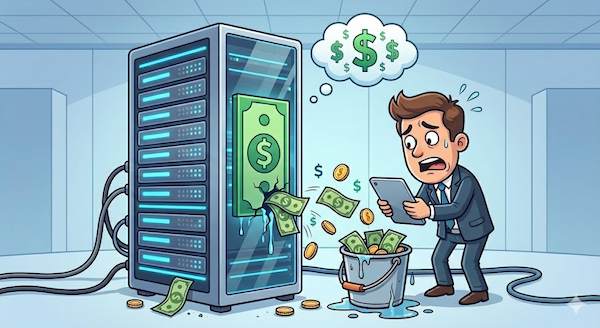Generic engineering challenges like FizzBuzz are the worst. If you're a developer, you may have groaned reading the last sentence, and we sympathize. If not, here's the scoop:
The interview process in the world of software development isn't quite like other industries. In addition to the standard "what are your strengths and weaknesses?" questions, most companies perform a series of technical assessments (because programming skills need to be proven somehow). FizzBuzz is a popular one that's been around since 2007. It goes like this:
Write a program that prints the numbers from one to one hundred. For multiples of three, print "Fizz" instead of the number. For multiples of five, print "Buzz". For numbers which are multiples of both three AND five, print "FizzBuzz".
The intention is to gauge a candidate's technical proficiency, communication skills, and logical reasoning. It's the same reason employers frequently reach for "whiteboard" interviews, where candidates are asked to solve (often obscure) problems in real time, on a whiteboard, in a specific time period. (Queue a room full of eyes carefully watching you sweat…not fun, just not fun).
At best, these assessments show whether a candidate can solve a problem they would likely never encounter in the wild in an unrealistic time frame. At worst, they leave candidates feeling unnecessarily intimidated, stressed, and defeated by a series of impractical "GOTCHA!" problems. Either way, they usually don't even begin to cover the skills that are applied in real life on the job.
So we take a different approach.
Here's what one of our recent hires has to say about the interview process at The Gnar:
Interviewing at The Gnar felt very collaborative. Not where they are judging you, or trying to trip you up with "gotcha" questions, or random things that aren't that widely known. It felt like I was actually working on the job. Like here's something we're working on and we're just pair programming."
- Anthony Harvey, Software Engineer
Interviewing at The Gnar
The interview process is critical. It's the reason, even at our busiest, we always take the time to get to know each candidate.
At The Gnar, our interview goals are:
- to see how candidates handle practical, real-life applications
- to visualize what it would actually be like to work together
- to show candidates our culture and who we are as a working team
Here's our process.
Phone Screening
We kick off the process with a 30-minute phone screen. We share a high-level overview of The Gnar: our history, our tech stack, the things that set us apart. Then we ask candidates a few questions about themselves, their experience, and what brought them to The Gnar. Finally, we share the details of our take-home project.
I had some conceptions about what it would be like to work for a consultancy. Long hours, demanding clients…. My conversation with Taylor during the phone screening eased some of my concerns with that-enough to make me open to take the next step further.
- Anthony Harvey, Software Engineer
The Client Simulation
Phase two is the coding challenge, or "client simulation". While there is no hard and fast time limit to complete it, candidates are given an estimated range of how long it should take. Googling is permitted. Researching the best approach to a problem is a core skill of programming, after all.
The goal of the simulation is to mimic a real-life client project. Some questions are intentionally left open to interpretation, mirroring the ambiguity commonly encountered on the job. In the technical interview following the simulation, the candidate will have an opportunity to talk through their approach.
In a traditional take-home test, you feel more pressure to get everything perfect because you don't think you're going to have the opportunity to explain yourself. And knowing I am going to have a whole hour to walk through it made me code it normally like I would code on a regular day, as opposed to trying to get everything perfect and pretty because I wasn't going to be able to defend myself.
- Valentine Rogers, Software Engineer
Technical Interview
After the coding exercise, we sit down with the candidate to talk through their process and any challenges they may have had. The goal is to discuss what they know, what they don't know, get feedback, and provide an opportunity for teaching moments (in both directions!).
Then we pick an aspect or two of the exercise and pair program on some refactoring. A dev from The Gnar does the driving so that the candidate can relax and simply talk through their thought process. The goal is to mimic the common on-the-job practice of pairing, so we can see what it would be like to work together in a professional setting, rather than being tested (phew 🙌).
I loved how the technical challenges were set up. … 'Deliver this feature'-it's exactly what you'd do on a job. You would have time to work and investigate and then you'd make sure you're being thorough, testing, etc.
- Dino Dourountoudakis, Software Engineer
Culture Interview
We close the interview process with an hour-long culture interview. This is an opportunity for candidates to meet with our leadership team and ask questions about the company in a laid-back environment.
Since we spend a lot of time interacting with clients, prospects, and each other here at The Gnar, every single employee becomes an ambassador for our company. We want to be sure candidates know the full scope of what they'll be doing, which includes communicating on a regular basis. No surprises.
When it comes to culture, our goal is not just to find a culture fit, but a culture add. We look for compatible, not synonymous. So while we build our culture around a shared set of assumptions and values, we never expect, nor want, candidates to be an exact replica of any current Gnar team member.
In the end, culture is a computed property. You don't get to decide what your culture is, it's built over time, hire by hire. Person by person.
I thought meeting with leadership was good. The idea was to talk about some non-technical things and get a feel for personality…a lot of what we do is talking with clients and with the teams, we are on. It's a really necessary soft skill. The culture interview helped to put a personality behind the emails.
- Dino Dourountoudakis, Software Engineer
Welcome to the Team
Since several of us have a chance to meet candidates, we make hiring decisions as a group. It's important that multiple people get a say. That being said, we don't waste time. We always get back to candidates within 24 hours of their interview.
We'll leave you with a quote which we think sums it up:
This process is in the spirit of trying to get you to visualize what it would be like to work at The Gnar and what people at The Gnar would feel like working with you day-to-day as well. It allows us both to play in that space in a positive direction.
- Valentine Rogers, Software Engineer
Learn more about The Gnar and our team.





